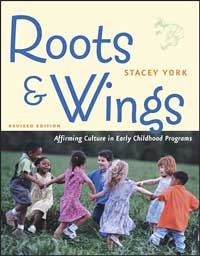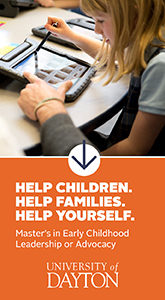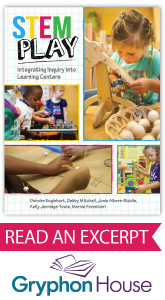ExchangeEveryDay Past Issues
 << Previous Issue
| View Past Issues | | Next Issue >>
<< Previous Issue
| View Past Issues | | Next Issue >> -Alison Gopnik, The Philosophical Baby
In Roots and Wings, Stacey York observes that from infancy on there is a "progression of children's awareness of and attitude toward human differences:"
"Older toddlers and young twos begin using words such as mine and me to describe themselves. They use the word you to describe all others. As their sense of self grows stronger, they go through a period of wanting to be independent and in control of themselves....They need to act on and prove their independence, and children who are not allowed to do things for themselves risk feeling shame. Children who are shamed or develop a shame-based personality may need to put down others in order to convince themselves that they are worthy and acceptable.
"Children at this age also begin to define themselves and others by physical characteristics such as skin color, hair color, and anatomy. They notice and are learning the names and locations of their body parts. They can classify people by gender. Two-year-olds are learning the names of colors, and they can distinguish between black and white. Two-year-olds may also start using racial labels rather than skin color to describe another person."
Affirming Culture in Early Childhood Programs |
|
An ideal resource for early childhood teachers, program directors, pre-service and in-service teacher trainers, and parents interested in anti-bias and multicultural education. |

 Roots and Wings was published over a decade ago as the first practical resource for early childhood teachers on the new topic of multicultural education. Completely updated, this new edition retains the best of the original while presenting current anti-bias and culturally relevant issues in educating young children in a clear and organized way.
Roots and Wings was published over a decade ago as the first practical resource for early childhood teachers on the new topic of multicultural education. Completely updated, this new edition retains the best of the original while presenting current anti-bias and culturally relevant issues in educating young children in a clear and organized way. 


Comments (3)
Displaying All 3 CommentsNewton , NJ, United States
I appreciate the previous respondent's views. A different piece jumped out at me: "Children who are shamed or develop a shame-based personality may need to put down others in order to convince themselves that they are worthy and acceptable." I am reading article after article about "bullying". I concerned both about putting children in categories of bullies and victims as well as the assumption that we have not created the bullying behaviors we so vehemently oppose. This one excerpt puts the issue into perspective for me. I am posting this at my desk! Thank you Stacey York for summing it up for me and allowing me to use this to stimulate thought.
CSBC
Denver, CO, United States
We have to be very careful here. Research shows that young children use many criteria to determine differences, including skin and hair color and length, language, clothes, behaviors, and so on. They do not see black and white; they discriminate between light and dark. None of these characteristics have any value until it is learned from others in their society and culture. Like adults, they are generally confused about the whole concept of race!
United States
HI,
I have worked in the early childhood field for 20 years and it is my observation that children only begin to use "racial labels" if they hear them and are taught that differences are somehow wrong or that some people are better than others because of skin color or how they dress. Just like they don't know what a park bench is if they have never seen one called a park bench!
Post a Comment